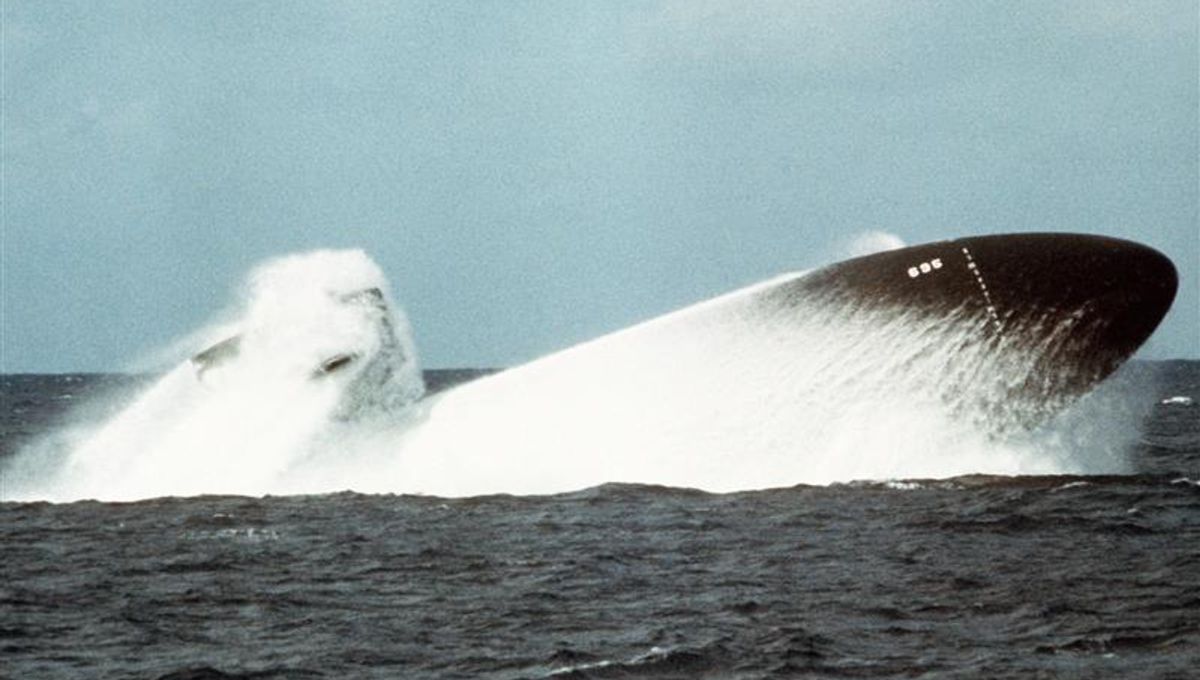
Have you ever wondered where nuclear submarines go when they die? That is, where their highly radioactive cores are stored once they have been decommissioned? Well, there is a place in the US, called Trench 94, which is effectively a nuclear submarine graveyard, containing dozens of old reactors that are stored in perpetuity.
And while the site is secure and has been designed to mitigate environmental impacts from its radioactive occupants, the number of retired cores will likely grow over the coming years.
The rise of nuclear submarines
Nuclear submarines are a dubious symbol of technological achievement. Not only does their atomic fuel allow them unlimited range throughout the world’s oceans, but they can operate for around 20 years at a time before they need to be refueled. Throughout much of their lifetime, these vessels are only slowed down by the humans they carry – those pesky humans and their need to eat and rest.
This ability to continuously run without needing to refuel is of great advantage in wartime. Nuclear-powered submarines, unlike their diesel-powered counterparts, do not need to surface to take in air for their engines, so they do not run the risk of being spotted by eagle-eyed enemies.
The development of these effective vessels started at the heart of the nuclear age, back in the 1940s, and they were first tested in 1953. The first nuclear-powered submarine, the USS Nautilus, was finally put to sea in 1955.
From here, the technology quickly advanced and was developed for various other vessels, such as aircraft carriers (USS Enterprise) and cruisers (USS Long Beach). By the end of 1962, the US Navy had 26 nuclear submarines in operation and 30 more were under construction.
At the same time, the technology was shared with Britain, while other nuclear power states (ones who had already developed and tested nuclear weapons), such as France, Russia, and China, developed their own versions.
By the end of the Cold War in 1989, there were over 400 nuclear-powered submarines in operation or under construction across the world. Today, the number is much lower – around 150 – though the number of countries developing vessels has risen to include India, while countries like Brazil and Australia are investigating their own options.
In addition to nuclear submarines, some countries have also developed nuclear-powered vessels that operate for civilian purposes, such as Russia’s icebreakers that explore Arctic regions. Japan also attempted to create its own nuclear-powered options in the 1970s, though these did not get off the ground.
The great reactor graveyard
When reactors are scrapped, there is a whole process needed to remove their highly dangerous cores. Firstly, the vessels are cut into segments to remove the reactor core and its fuel; in the US, the fuel is sent off to Idaho National Lab. The section that is removed contains the surrounding hull, the reactor’s lead shielding, and the fuel assemblies.
Once removed, the “dry casks”, as they are called, are transported up the Columbia River and then offloaded at the Port of Benton, where they are carried by truck to a site in Hanford, Washington. This is where Trench 94 is located.
Once the casks arrive, they are moved to the 1,000-foot-long (304.8 meters) open-air trench. At present, there are around 136 casks at the site, which are visible from Google Maps.
The casks, known as High Integrity Containers (HICs), are designed to hold their radioactive contents for 300 years and to survive severe damage.
That’s good for the immediate future but, as with most nuclear fuel, they do represent a challenge for future generations. According to the US Navy, each cask contains around 25,000 curies of radiation – which would kill a human upon exposure – and will still be at around 250 curies in 1,000 years.
As time goes on, more reactors will be added to their spent ranks – and this is only the graveyard for American vessels. Each country with nuclear submarines will have its own sites for decommissioned fuels. So how long can the nuclear cask be kicked down the proverbial corridor?
[H/T: Popular Mechanics]
Source Link: Trench 94: The US Navy's Nuclear Submarine Graveyard